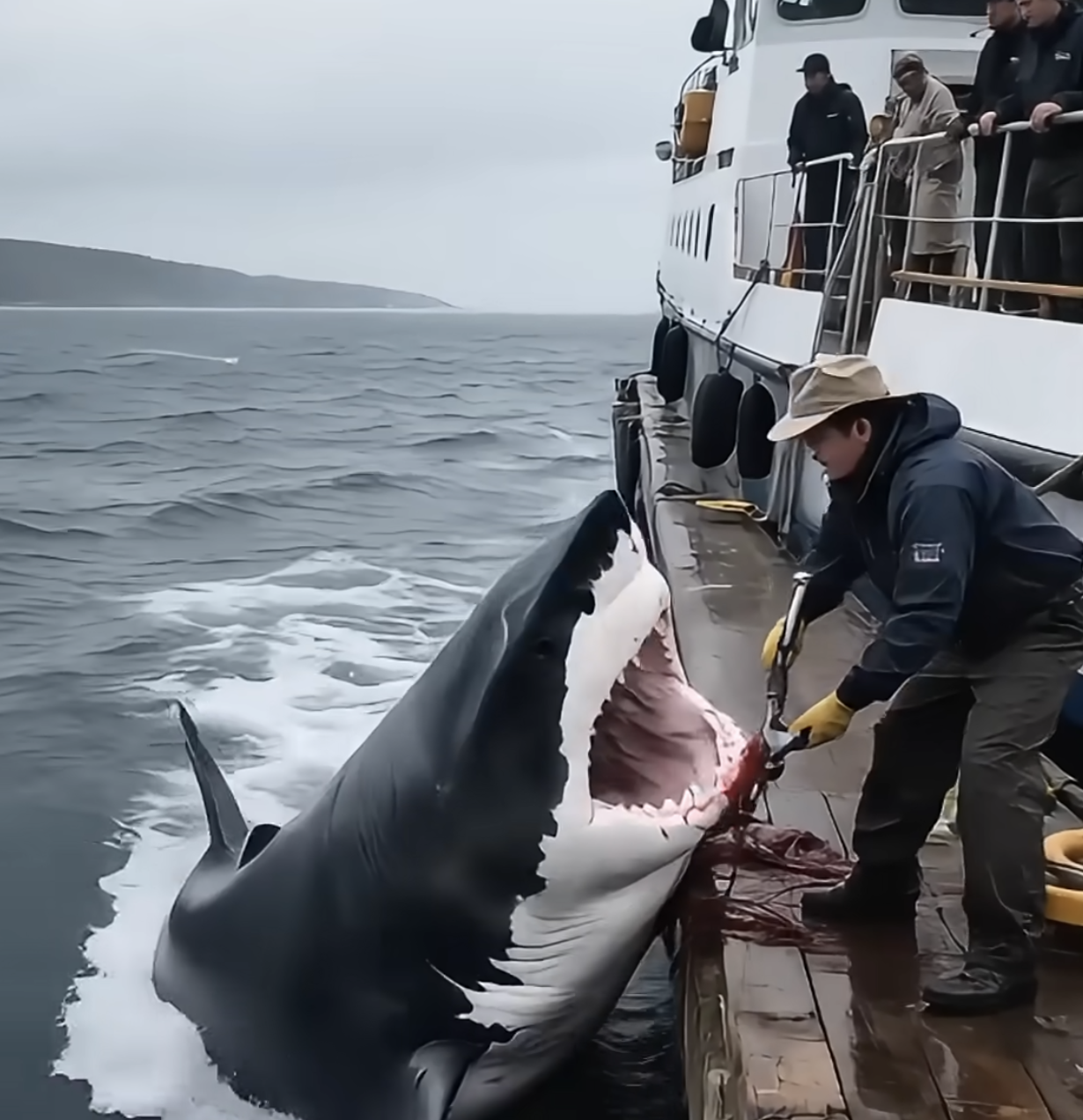In the coastal town of Seabrook, nestled between rugged cliffs and the endless expanse of the Atlantic, an unusual event had captured the attention of the entire community. The usually serene beach had become the focal point of a spectacular phenomenon—a stranded great white shark. The creature, majestic and fearsome, lay helpless on the golden sands, its gills flaring desperately in search of water.
The news spread like wildfire. People flocked to the beach, abandoning their daily routines to witness the marvel firsthand. Conversations buzzed with a mixture of awe and concern. Families, tourists, and journalists jostled to catch a glimpse of the stranded giant. As the crowd swelled, so did the collective determination to save the shark.
Local marine biologists were the first to arrive, assessing the situation with a trained eye. Dr. Emily Carter, the head of the marine conservation team, took charge. Her voice, calm and authoritative, guided the efforts of volunteers. “We must act quickly,” she urged, “The shark’s survival depends on our ability to return it to the water before its condition deteriorates.”
A plan was swiftly devised. Buckets of seawater were splashed over the shark’s massive body to keep it cool. Volunteers formed a human chain, working tirelessly to maintain a steady flow of water. Children, with wide-eyed wonder, eagerly assisted by ferrying smaller pails back and forth, their spirits buoyed by a sense of purpose.
As the hours passed, the town’s efforts gained momentum. A local fisherman, Tom Evans, brought his boat closer to shore, suggesting that ropes be used to guide the shark back to the sea. His expertise in handling marine creatures proved invaluable. The crowd watched as he skillfully maneuvered the ropes around the shark, ensuring a secure yet gentle hold.

The sun dipped lower in the sky, painting the horizon with hues of orange and pink. The urgency was palpable. Every passing minute was a reminder of the delicate balance between life and death. United by a shared mission, the people of Seabrook poured their energy into one final push.
With a coordinated effort, the volunteers heaved, and the shark, sensing the water’s embrace, began to thrash its tail with renewed vigor. A cheer erupted as the great white inched closer to freedom.
But then, in an unforeseen twist, the shark’s behavior shifted. Perhaps disoriented by exhaustion or overwhelmed by the sudden influx of stimuli, it turned sharply, snapping its powerful jaws. The crowd recoiled, gasping in shock as the creature’s menacing teeth glinted in the fading light.


